
Terrell Matthews
Articles by Terrell Matthews

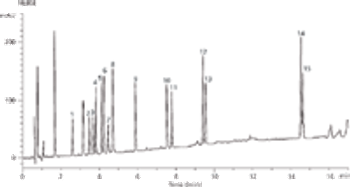
This study evaluates the performance of a C18 core-shell phase that incorporates a C18 ligand with iso-butyl side chains. The Kinetex? XB-C18 HPLC/ UHPLC column delivers a fast and effective separation of several common preservatives in cosmetics.

The combination of the small particle size and narrow particle size distribution coupled with the significantly shorter diffusion path provided by the Kinetex core-shell particle results in a material that yields significantly increased column efficiencies and chromatographic resolution. This is a significant benefit for separation scientists looking to increase efficiency and chromatographic resolution, especially for complex separations containing many compounds and very closely eluting compounds so that accurate identification and quantification can be achieved.
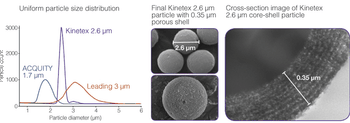
As a result of their high toxicity and carcinogenicity, aflatoxins are of major concern for food producers, the food processing industry and consumers. Most countries have legislation setting maximum permissible limits for aflatoxins, which are in the low micrograms per kilogram for food matrices.

The analysis of polar compounds in support of clinical and preclinical pharmacokinetic studies requires an analytical methodology capable of achieving ultra-low detection and quantification limits. The high sensitivity afforded by coupling HPLC with tandem mass spectrometry (MS–MS) has made it the technique of choice in this environment, but it is subject to the following limitations when reversed-phase liquid chromatography (RPLC) is used
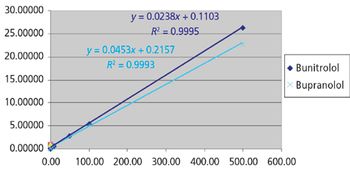
Automated solid-phase extraction (SPE) has been used extensively with liquid chromatography–tandem mass spectrometry (LC–MS-MS) to facilitate high-throughput analysis in the pharmaceutical, diagnostic, and forensic toxicology areas. In this work, we demonstrate the use of a systemized approach to SPE method development and LC–MS-MS analysis. This approach provides dramatic savings in analysis time and takes advantage of new innovations in high performance liquid chromatography (HPLC) columns to provide the cleanest extracts for LC–MS injection.

The use of mobile phase pH to control analyte ionization states (pH-LCâ„¢) in reversed phase HPLC separations is a highly effective way to change selectivity. The ionized species of an analyte is shown to have higher polarity (less hydrophobicity) than the neutral species, which results in a loss of expected retention for that analyte. This can be attributed to less interaction with the hydrophobic stationary phase and greater affinity with the aqueous portion of the mobile phase. Ionized species also participate in ionic interactions with exposed and activated silanols, which impact peak shape and reproducibility.

The analysis of polar compounds in support of clinical and preclinical pharmacokinetic studies requires an analytical methodology capable of achieving ultra-low detection and quantification limits. The high sensitivity afforded by coupling HPLC with tandem mass spectrometry (MS-MS) has made it the technique of choice in this environment, but it is subject to the following limitations when reversed phase liquid chromatography (RPLC) is used:

The analysis of polar compounds in support of clinical and pre-clinical pharmacokinetic studies requires an analytical methodology capable of achieving ultra-low detection and quantification limits. The high sensitivity afforded by coupling HPLC with tandem mass spectrometry (MS–MS) has made it the technique of choice in this environment, but it is subject to the following limitations when reversed phase liquid chromatography (RPLC) is used
Latest Updated Articles
 Improved Analysis of Preservatives in Cosmetics Using a Unique Core-Shell Phase
Improved Analysis of Preservatives in Cosmetics Using a Unique Core-Shell PhasePublished: August 2nd 2011 | Updated:
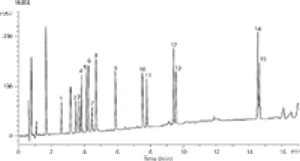 Improved Analysis of Preservatives in Cosmetics Using a Unique C18 Core-Shell Phase
Improved Analysis of Preservatives in Cosmetics Using a Unique C18 Core-Shell PhasePublished: June 1st 2011 | Updated:
 Increased Efficiency and Resolution with Kinetex Core-Shell Technology
Increased Efficiency and Resolution with Kinetex Core-Shell TechnologyPublished: March 2nd 2010 | Updated:
 Solid-Phase Extraction of Aflatoxins from Peanut Butter and Quantification Using Kinetex Core-Shell Technology by LC–MS–MS
Solid-Phase Extraction of Aflatoxins from Peanut Butter and Quantification Using Kinetex Core-Shell Technology by LC–MS–MSPublished: October 2nd 2009 | Updated:
 Increasing LC–MS–MS Sensitivity with Luna HILIC
Increasing LC–MS–MS Sensitivity with Luna HILICPublished: July 2nd 2008 | Updated:
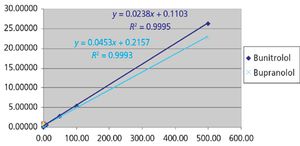 A Simplified Approach to Optimize SPE Method Development with Downstream LC–MS Analysis Allowing 100% Organic, Basified Injection Solvents
A Simplified Approach to Optimize SPE Method Development with Downstream LC–MS Analysis Allowing 100% Organic, Basified Injection SolventsPublished: July 1st 2008 | Updated:
